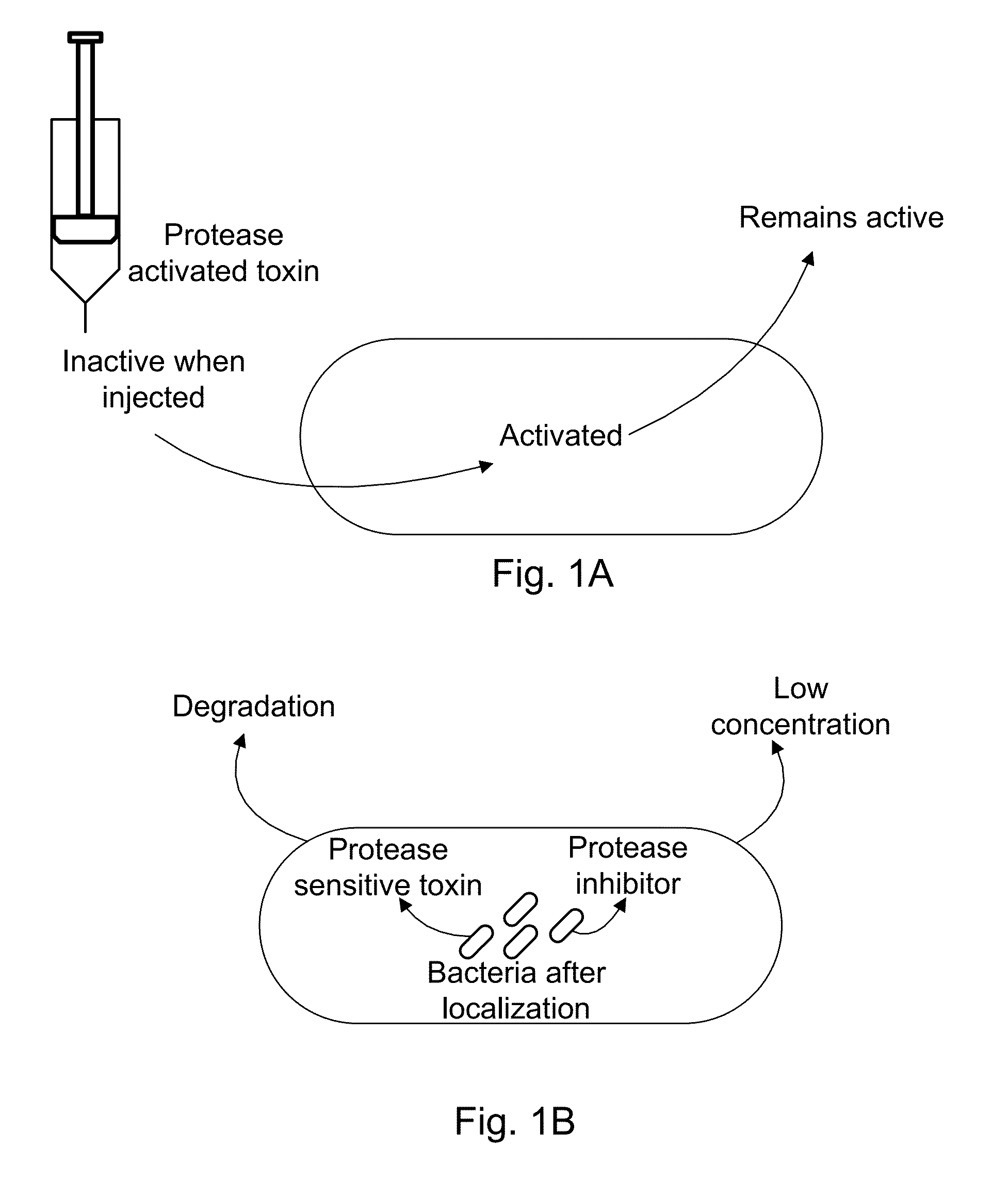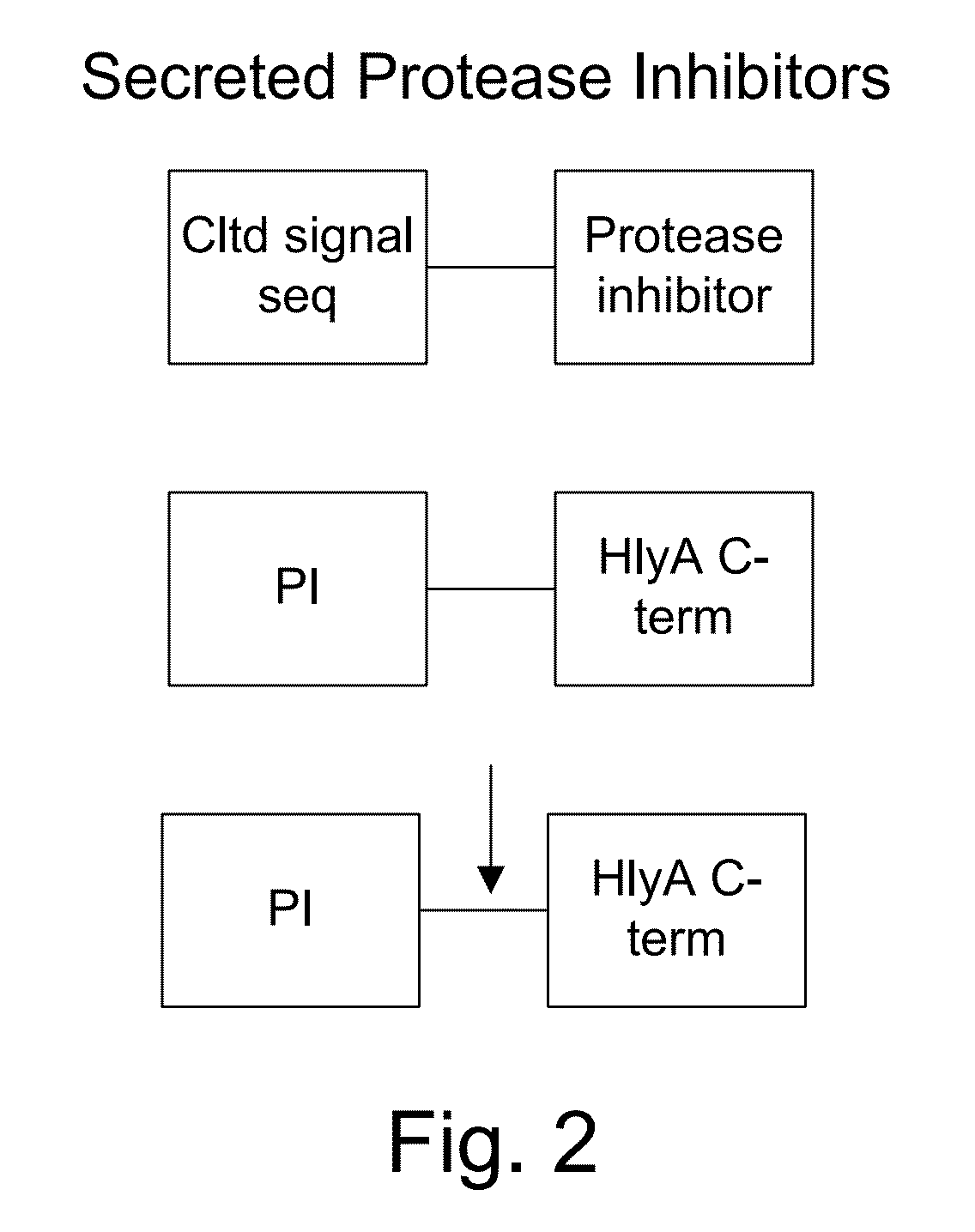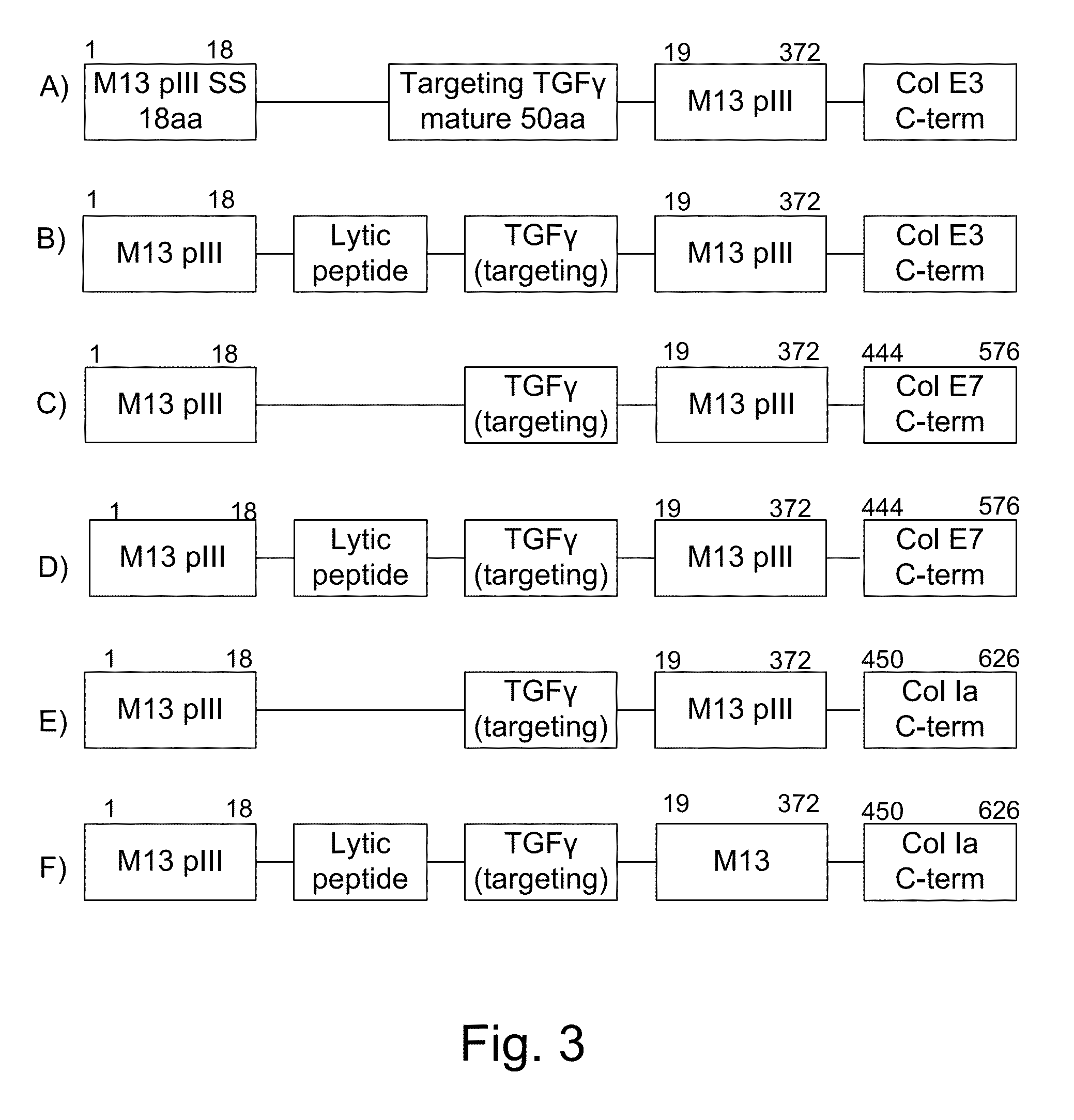Protease inhibitor: protease sensitivity expression system and method improving the therapeutic activity and specificity of proteins and phage and phagemids delivered by bacteria
a protease and expression system technology, applied in the direction of peptides, enzymology, dna/rna fragmentation, etc., can solve the problems of limiting known forms of genetic exchange, and achieve the effects of preventing the destruction of therapeutic molecules, expanding tumor zones, and increasing activity
- Summary
- Abstract
- Description
- Claims
- Application Information
AI Technical Summary
Benefits of technology
Problems solved by technology
Method used
Image
Examples
Embodiment Construction
[0060]The present invention provides, according to various embodiments, improved live attenuated therapeutic bacterial strains that express one or more therapeutic molecules together with one or more protease inhibitor polypeptides that inhibit local proteases that could deactivate the therapeutic molecules. In particular, one aspect of the invention relates to live attenuated tumor-targeted bacterial strains that may include Salmonella vectoring novel chimeric anti-tumor toxins to an individual to elicit a therapeutic response against cancer. The types of cancer may generally include solid tumors, leukemia, lymphoma and multiple myeloma. In addition, certain of the therapeutic molecules have co-transmission requirements that are genetically unlinked to the therapeutic molecule(s), limiting certain forms of genetic exchange. Another aspect of the invention relates to live attenuated tumor-targeted bacterial strains that may include Salmonella vectoring filamentous phage that encode ...
PUM
| Property | Measurement | Unit |
|---|---|---|
| concentration | aaaaa | aaaaa |
| osmotic pressure | aaaaa | aaaaa |
| inhibitory concentration | aaaaa | aaaaa |
Abstract
Description
Claims
Application Information
 Login to View More
Login to View More - R&D
- Intellectual Property
- Life Sciences
- Materials
- Tech Scout
- Unparalleled Data Quality
- Higher Quality Content
- 60% Fewer Hallucinations
Browse by: Latest US Patents, China's latest patents, Technical Efficacy Thesaurus, Application Domain, Technology Topic, Popular Technical Reports.
© 2025 PatSnap. All rights reserved.Legal|Privacy policy|Modern Slavery Act Transparency Statement|Sitemap|About US| Contact US: help@patsnap.com



